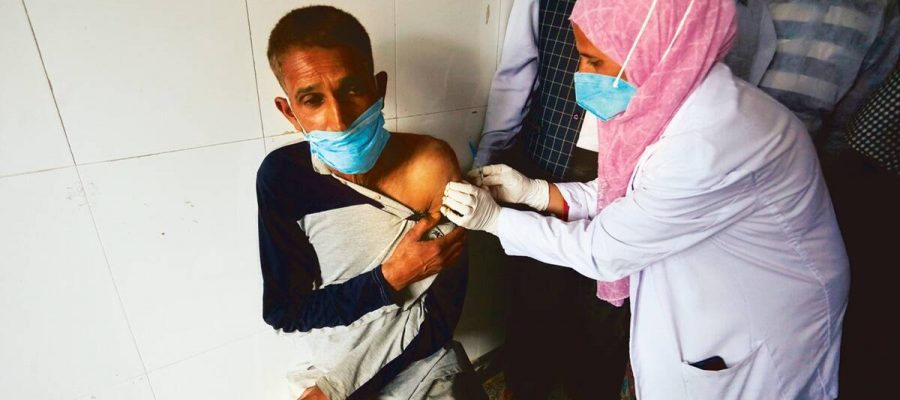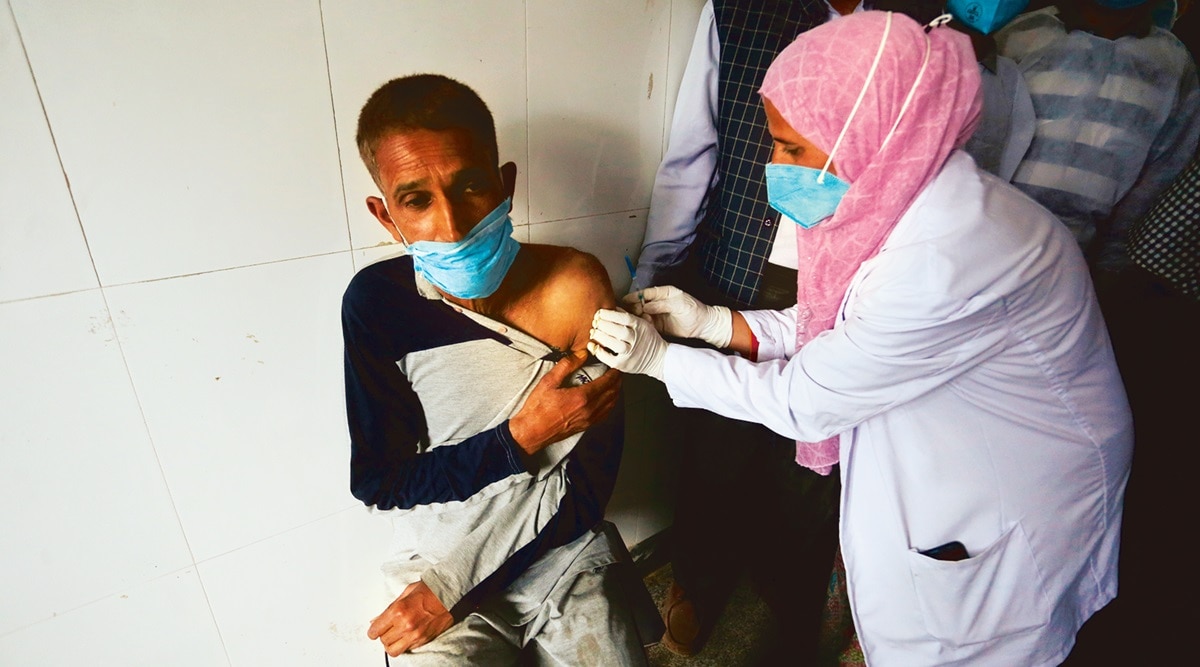While hesitancy and shortages have hobbled the vaccination drive across the country, in Shopian, health officials proudly claim that they have worked to vaccinate much of the population.
Even as the sun scorches the mountain top, Ghulam Nabi Awan’s mud house is refreshingly cool. Every year, at the start of the summer months, Ghulam Nabi Awan’s family with their livestock trek 5 km from Jampathri, their village in Keller tehsil of South Kashmir’s Shopian district, to this mud house in the upper reaches. “We stay here for six months (April to September) and take our sheep out to graze. We go downhill to Keller only if we need supplies or have a hospital visit,” says Awan, 54.
This year, the family — Awan, his wife Naseema, their five children, aged between 20 and 30, and their spouses — had to make at least two extra trips downhill: to get their Covid vaccines.
Awan and Naseema are from the nomadic Gujjar community, the largest tribal group in Jammu and Kashmir, which makes up about 50 per cent of the population in Keller tehsil.
While hesitancy and shortages have hobbled the vaccination drive across the country, in Shopian, health officials proudly claim that they have worked to vaccinate much of the population. Shopian was among the first districts in Jammu and Kashmir to achieve nearly 100 per cent vaccination for the 45+ age group.
In Keller’s Jampathri village, for instance, 99.2 per cent of those in the 45+ group have got their first doses.
Apart from countering vaccine hesitation early on, the local administration focussed on engaging community leaders, teachers, ASHA and anganwadi workers to dispel myths and encourage participation in the vaccine drive.
Noorudin Gorsi is among those who assisted local officials in conducting the vaccination drive in Jampathri village.
“I work as a teacher and know all the villagers personally. There are 400 households in this village. We may have issues of road connectivity, electricity and water, but we have had no issues getting vaccines.”
Gorsi says he was among the first in his village to get vaccinated, and that inspired others to follow.
Dr Irshad Ahmad, the person in charge of immunisation at the Sub District Hospital in Keller, said that in the initial phase of the vaccination drive, around March, few turned up despite awareness campaigns. “There were some misconceptions around infertility from vaccines. Some of them even feared that the vaccine could be fatal.”
There was the added challenge of reaching the nomadic communities, many of whom had already migrated to the hills. To reach out to them, the Keller hospital set up three mobile vaccination units.
Each team, he explained, packed the vaccine in ice boxes and trekked up the mountains. An ambulance followed as far as the road could go. “One vial has about 10 doses. To ensure there was no wastage, the team would gather 10 people and administer the vaccine, before moving to another group of 10,” he said.
“By now, we have vaccinated most of the population here through some strong community engagement. In May, we were vaccinating around 400 people a day, but now that number has come down to about 10,” said Ahmad.
Source: Read Full Article


